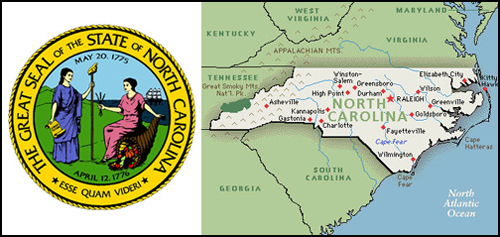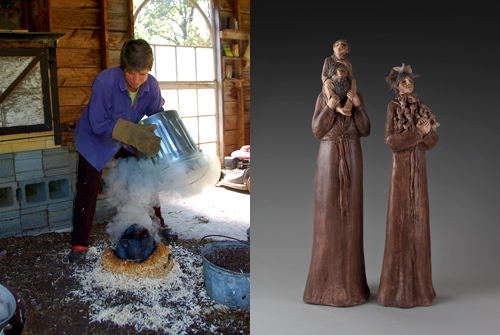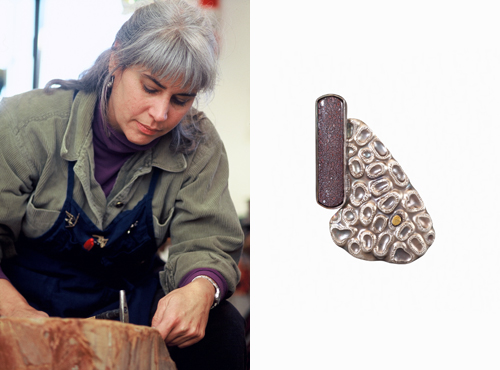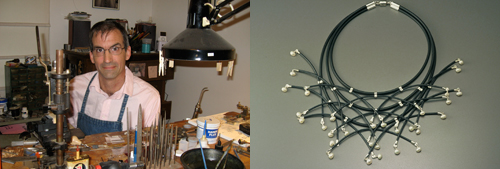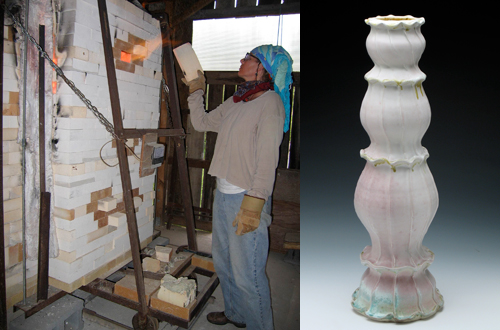Mary Regan, executive director of the North Carolina Arts Council, shared the following thoughts at the 2011 Living Treasures Award Ceremony, on November 29, 2011, at the Cameron Art Museum in Wilmington:
THE IMPORTANCE OF CRAFT IN NORTH CAROLINA
“North Carolina and craft just seem to go together. Perhaps more than any other art form, with the possible exception of literature, craft is identified with this state. It’s an association with deep roots, a connection that comes closer to an article of faith than anything of flimsier standing.
Through a long and layered history of indigenous traditions and, more recently, the emergence of influential institutions and communities of independent studio craft artists, North Carolina is recognized nationally and internationally as a natural home for craft training, research, exhibition, and preservation, and as an essential laboratory for innovations in the art form.
How did this come to be? I’m sure there are many here this evening more able to trace the origins of this entanglement than I. The craft landscape in North Carolina in 2011 is marked by university programs, museums, research institutions, schools, guilds, and independent makers and scholars who bring both curiosity and self-reflection to their involvement and place within the history of the art form.
In the programs and publications of organizations like the Center for Craft, Creativity and Design, the Mint Museum of Art, the Penland School of Crafts, and through celebrations of contributions and achievements like the Living Treasures Award, the best minds in the field have been busy considering the state of craft today within the context of its traditions and development.
Like many things, North Carolina’s intimate connection to craft is in part the result of accidents of place and in part the interventions of exceptional and determined people at moments when their influence could be most effective. The old quote that North Carolina was “a vale of humility between two mountains of conceit” may have overstated our sanctity, but it does describe our pre-industrial economic relationship with our neighbors succinctly and may ground the origins of our aesthetic landscape as well.
Largely agrarian but not home to the same concentration of plantations as our neighbors, our state was populated by small landowners and served as a source for natural resources often processed and shipped for profit outside our borders. Settlers and farmers, like the Native Americans before them, had to produce much of their own functional wares, like pots, coverlets, leatherwork, furniture, and tools.
Value was defined by how well the object served an intended purpose, and only secondarily how it looked. Form followed function and flowered from maker to maker, community to community, each developing its own distinctive marks. North Carolina’s size, lack of cities, and geographic challenges, particularly in the mountains, may have conspired to extend our dependence on self-sufficient local economies longer than in some other areas.
But even geography was no match for industrialization, which changed the economy forever with the expansion in the textile and furniture industries around 1900. Because people follow jobs, migrations from farm to factory made subsistence even harder for those left behind.
It was into this environment that Frances Goodrich, Olive Dame Campbell, Lucy Morgan, the Busbees, and others appeared, mixing missionary work with an appreciation for the authenticity of handmade production. Whatever the motivation, these visionary individuals not only helped the craftspeople they encouraged and promoted in their time but also, in many cases, left behind organizations that would outlive them and still serve as leading institutions to our day.
Those organizations thrive because, in many cases, they continue to be led by visionary leaders, like Jean McLaughlin, who ply their own brand of missionary work in the service of craft and craft artists.
Craft and the economy have been inextricably bound together since the beginning. The craft revival that spawned the creation of the Southern Highland Handicraft Guild, the John C. Campbell Folk School, and Penland School of Crafts was inspired, in part, by the desire to give mountain people alternative ways of earning income.
But at least some of the market for these handmade items, and ultimately for the programs at the craft schools, came from outside the area–from vacationers who enjoyed the natural scenery but wanted something more tangible and culturally meaningful from their visit. As any cultural tourist today would.
North Carolina has changed significantly in the last century, but the identity it has forged with craft has only gotten stronger. The western NC craft organizations were among the first important cultural institutions in the state, predating the Mint Museum, NC Symphony, NC Museum of Art, The Lost Colony, and others, which sprang up in the 1930s, ‘40s, and ‘50s, usually in urban centers.
And while we have watched with pride these and other institutions grow and gain recognition regionally and nationally, our artistic compass has in many ways remained centered because of the legacy of craft in the state: its history and the way it evolved, not as an isolated artistic pursuit, but bound closely to the environment and the needs of life.
Our craft artists and institutions honor that connection to this day. The last half-century has seen both an evolution and a renewed appreciation of what craft is and can be, thanks in great part to Penland and the gifted artists, like Richard Ritter and Mark Peiser, it has attracted to the state to live and work. Their successes have cemented North Carolina’s reputation in the craft world and catalyzed the organizational growth we’ve seen statewide in craft. They have also spurred this burgeoning population of artists who support themselves to some degree from craft-related activities.
The craft sector was one of the first in the creative industry to recognize, document, and claim its role as a significant contributor to the state’s overall economy. And they found it’s not just cultural tourism anymore; it’s in education, the building trades, public art, design, and retail as well as all the areas that intersect with them in the economy.
So craft is important in many ways to North Carolina: as a reminder of where we’ve come from; as a reason our state is an attractive destination for visitors; as an incubator of small businesses grounded in sustainable practices.
But most of all, our state’s love affair with craft says something about who we are and what we value. It connects us with the material, the functional, the familiar. In a world of abstractions where we’re often separated by technology and distance from the stuff of our lives, craft allows us to see that it’s still possible to touch and shape our environment with our own hands.”


